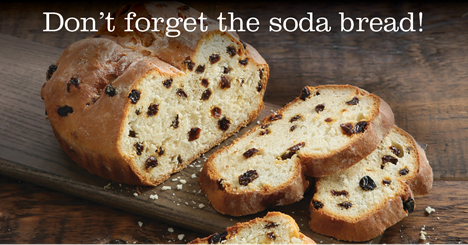
History of Irish Soda Bread on St. Patrick's Day
We love a good St. Patrick’s Day dinner. Corned beef, cabbage, a Guinness or two. It’s perfect. But next to those big players sits another staple of the meal, Irish soda bread. Without a good soda bread your Irish feast is incomplete, it’s an essential side dish and this year we want to put a bigger focus on it. Let’s learn about the history of Irish soda bread and how it became associated with the holiday.
The first documented people to enjoy soda bread were the American Indians. They used pearl ash, a natural form of soda created from the ashes of wood, to make their bread without yeast. However, this practice became known worldwide when the Irish discovered and replicated it. And although its heavily associated with St. Patrick’s Day, Saint Patty himself was around well before soda bread was well-known.
Irish soda bread was first created in the 1830s, when baking soda was first introduced to the UK. At the time, Ireland was facing financial hardship and lack of resources, so they turned to soda bread out of neccessity, it was inexpensive and required few ingredients. Wheat flour, baking soda, salt, and soured milk was all they needed. Even Irish families who lived in the most isolated parts of the country could gather the ingredients to make soda bread. At the time, many of the lower class in these remote areas did not have oven access, so they used iron pot and griddles over open hearths. A unique cooking method that gave soda bread its dense texture, hard crust, and slight sourness.
Despite its humble beginnings, Irish soda bread has become a large part of the typical St. Patrick’s Day feast and plays a major role in Ireland’s culinary history. Pick up your own loaf of Market 32 Irish Soda Bread online or at your local store.
Happy St. Patrick’s Day!
